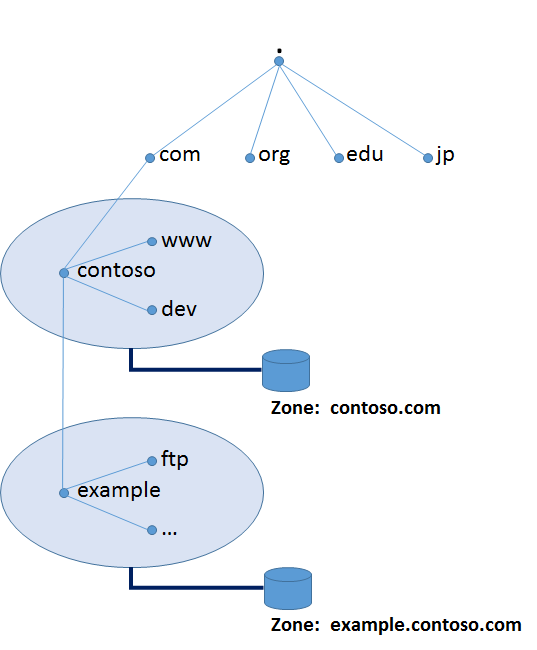In a local area network for a typical business network, the DNS resolvers that would be the first used by computers on the network would be placed behind a firewall inside the LAN, or in a DMZ. If necessary, DNS resolution would be passed up the hierarchy until a server is found that has the answer.
Domain name resolvers determine the domain name servers responsible for the domain name in question by a sequence of queries starting with the right-most (top-level) domain label.
A DNS resolver that implements the iterative approach mandated by RFC 1034; in this case, the resolver consults three name servers to resolve the fully qualified domain name “www.wikipedia.org”.
For proper operation of its domain name resolver, a network host is configured with an initial cache (hints) of the known addresses of the root name servers. The hints are updated periodically by an administrator by retrieving a dataset from a reliable source.
Image source: https://gitlearning.files.wordpress.com/2015/01/dns_10.png
Assuming the resolver has no cached records to accelerate the process, the resolution process starts with a query to one of the root servers. In typical operation, the root servers do not answer directly, but respond with a referral to more authoritative servers, e.g., a query for “www.wikipedia.org” is referred to the org servers. The resolver now queries the servers referred to, and iteratively repeats this process until it receives an authoritative answer. The diagram illustrates this process for the host that is named by the fully qualified domain name “www.wikipedia.org”.
This mechanism would place a large traffic burden on the root servers, if every resolution on the Internet required starting at the root. In practice caching is used in DNS servers to off-load the root servers, and as a result, root name servers actually are involved in only a relatively small fraction of all requests.
Recursive and caching name server
In theory, authoritative name servers are sufficient for the operation of the Internet. However, with only authoritative name servers operating, every DNS query must start with recursive queries at the root zone of the Domain Name System and each user system would have to implement resolver software capable of recursive operation.
To improve efficiency, reduce DNS traffic across the Internet, and increase performance in end-user applications, the Domain Name System supports DNS cache servers which store DNS query results for a period of time determined in the configuration (time-to-live) of the domain name record in question. Typically, such caching DNS servers also implement the recursive algorithm necessary to resolve a given name starting with the DNS root through to the authoritative name servers of the queried domain. With this function implemented in the name server, user applications gain efficiency in design and operation.
The combination of DNS caching and recursive functions in a name server is not mandatory; the functions can be implemented independently in servers for special purposes.
Internet service providers typically provide recursive and caching name servers for their customers. In addition, many home networking routers implement DNS caches and recursors to improve efficiency in the local network.
https://en.wikipedia.org/wiki/Domain_Name_System
Image source: https://gitlearning.files.wordpress.com/2015/01/dns_8.png
ShareMAY








About the Author:
I am a cybersecurity and IT instructor, cybersecurity analyst, pen-tester, trainer, and speaker. I am an owner of the WyzCo Group Inc. In addition to consulting on security products and services, I also conduct security audits, compliance audits, vulnerability assessments and penetration tests. I also teach Cybersecurity Awareness Training classes. I work as an information technology and cybersecurity instructor for several training and certification organizations. I have worked in corporate, military, government, and workforce development training environments I am a frequent speaker at professional conferences such as the Minnesota Bloggers Conference, Secure360 Security Conference in 2016, 2017, 2018, 2019, the (ISC)2 World Congress 2016, and the ISSA International Conference 2017, and many local community organizations, including Chambers of Commerce, SCORE, and several school districts. I have been blogging on cybersecurity since 2006 at http://wyzguyscybersecurity.com